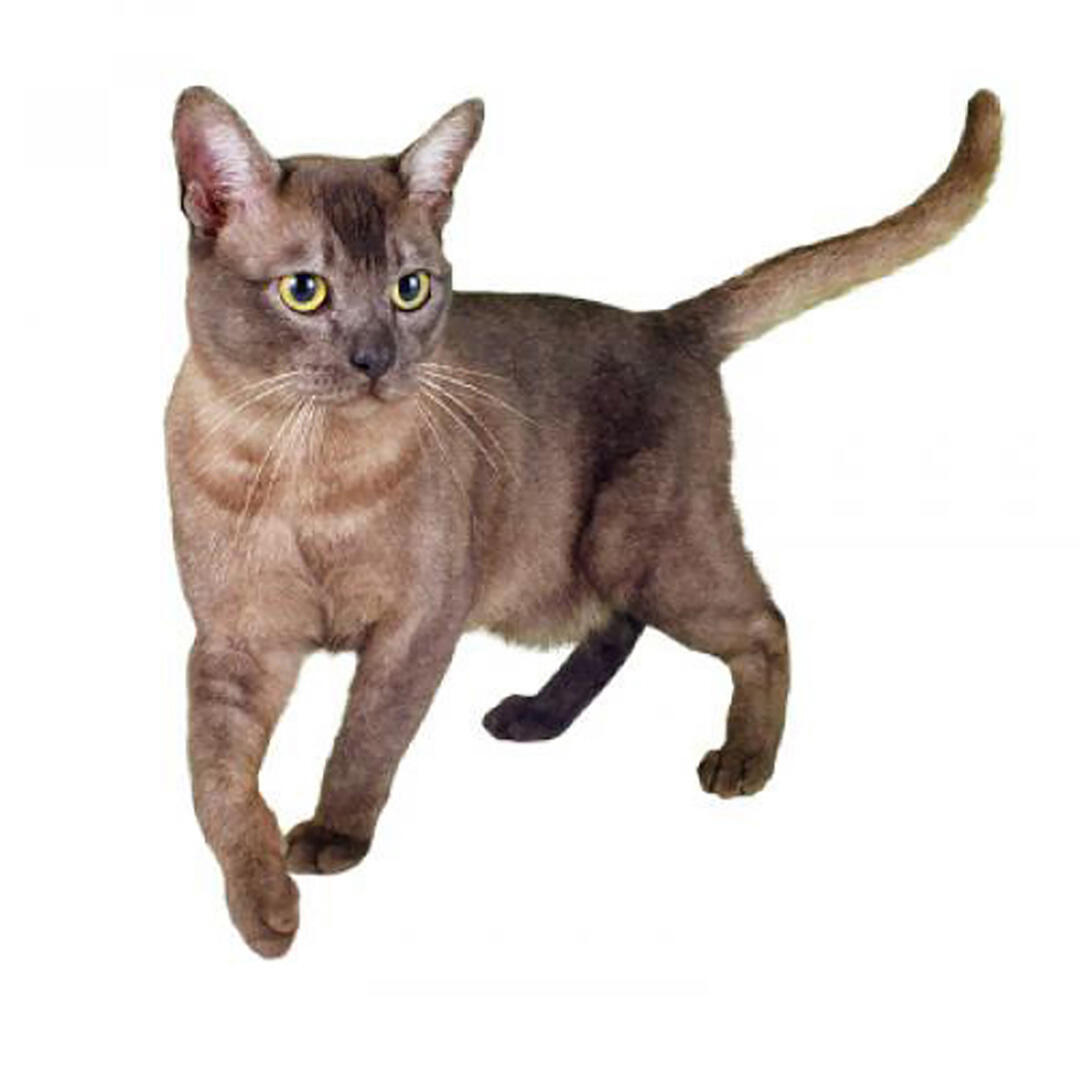
| Family-friendly: | 5/5 |
| Playfulness: | 4/5 |
| Intelligence: | 4/5 |
| Tendency to Vocalise: | 4/5 |
| Likes Other Pets: | 4/5 |
| Grooming needs: | 3/5 |
| Shedding: | 1/5 |
The Asian cat breed may be prone to:
- Hypokalaemia which is a condition where the levels of potassium in the blood are low which leads to weakness.
- Polycystic kidney disease which is an inherited condition where cysts form in the kidneys. This affects kidney function and can eventually lead to kidney failure. However, it is worth noting that the risk of developing this disease in this breed is lower than in other cat breeds that are prone to the problem.
- Burmese head defect which is a condition where the face and skull do not form correctly.
Testing available:
- DNA testing for hypokalaemia, polycystic kidney disease and Burmese head defect which tests whether a cat has the potential to be affected by these conditions.
Outgoing, friendly and lively, the Asian is very much a ‘people’ cat, although they will get along well with other cats and household pets if raised with them. They are entertaining to play with, talkative but not too loud and will chat with owners if spoken to directly. In a calm or relaxed environment, they are an easy-going cat to live with, but can pick up on stress easily and particularly in multi-cat households, this can cause behaviour problems such as fighting, marking and inappropriate toileting.
| Family-friendly: | 5/5 |
| Playfulness: | 4/5 |
| Intelligence: | 4/5 |
| Tendency to Vocalise: | 4/5 |
| Likes Other Pets: | 4/5 |
| Grooming needs: | 3/5 |
| Shedding: | 1/5 |
The Asian is the result of an accidental mating between a Lilac coloured Burmese queen, and a Chinchilla Persian male in the UK, in the early 1980’s. The resulting kittens were so attractive that it was decided to develop this crossing into a new breed in its own right. Effectively the Asian is in body type, a Burmese, but the coat would come in a variety of colours and both a short hair (Asian) and a semi-long hair (Tiffanie). All varieties of Asian received GCCF Championship status by 2003.
Some outdoor space will be enjoyed by the Asian, though their fine coat is not particularly weather proof to wet, cold or windy situations. A secure and sheltered cat run with free access to the main house will be appreciated. This is not a cat to give unsupervised access to the outdoor world, they are just curious and bold enough to get themselves into trouble and are quite a high theft risk.
Easily amused and delighting in play and interaction from their owners, the Asian will enjoy playing games with ‘things on strings’, balls and toys that can be fetched and carried, as well as climbing cat-trees and generally helping to supervise human activity. They will benefit from eating some of their daily food portion from food dispensing toys that help to recreate hunting and prey capture behaviours.
Every cat is unique and each has their own particular likes, dislikes, and needs when it comes to food. However, cats are carnivores and every cat must obtain 41 different and specific nutrients from their food. The proportion of these nutrients will vary depending on age, lifestyle and overall health, so it's not surprising that a growing, energetic kitten needs a different balance of nutrients in her diet than a less active senior cat. Other considerations to bear in mind are feeding the right quantity of food to maintain 'ideal body condition' in accordance with feeding guidelines and catering to individual preference regarding wet or dry food recipes.
Groom through the coat once a week as an opportunity to bond and keep skin healthy as this cat is not at risk of matting or tangling. A greasy coat is a sign your cat is not self-grooming at all and this may indicate poor health.
As with all cats, regular vaccination and parasite control is recommended.
The Asian can make an excellent family pet with children old enough to respect a cat’s space and handle them sensitively. They will thrive best in a home where there are people around most of each day, and in quiet or relaxed homes without too much hustle and bustle. Consider the time needed to play with your cat each day to ensure they get the exercise and mental stimulation needed.